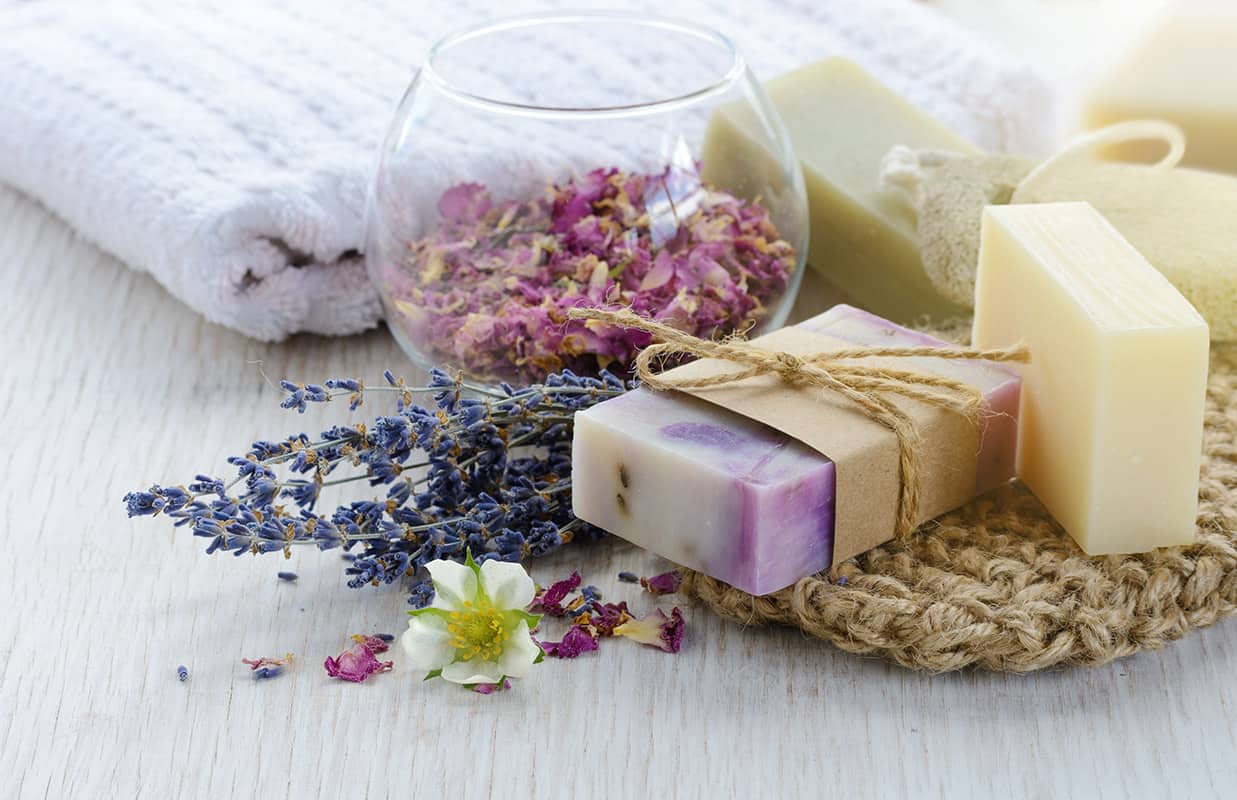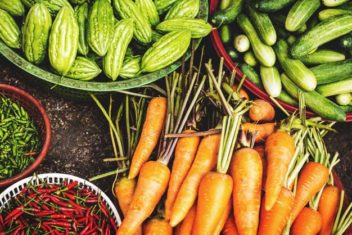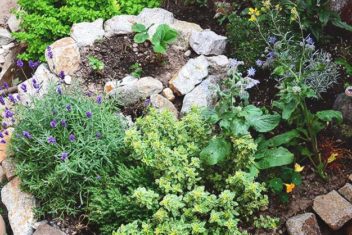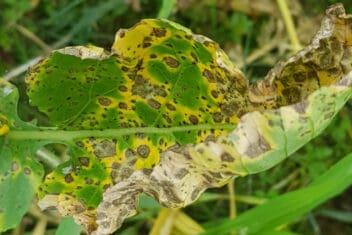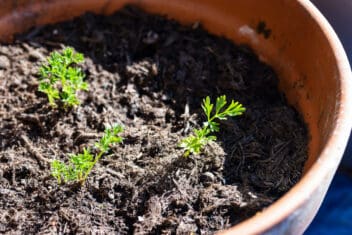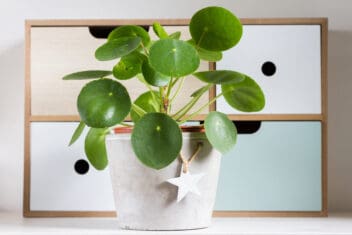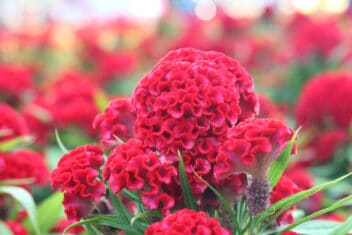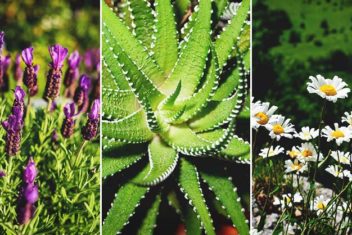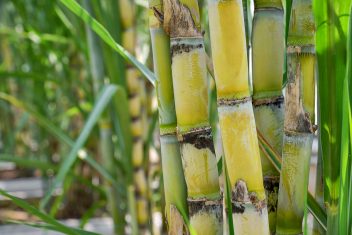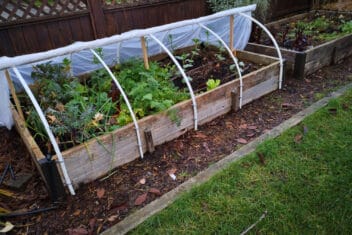Making soap is a fun way to be creative while making something useful. Combine your love for gardening with soapmaking by adding beautiful, fragrant, or medicinal herbs from your garden.
Using herbs improves your soap because they can add color, exfoliate your skin, or create a calming fragrance. Some herbs soothe irritation, while others have antiseptic properties.
Not all herbs are useful for soap making, however. Here are some of the best options.
The Best Herbs for Soap Making
Whether you grow them in your garden, forage them in the wild, or purchase them in the store, these herbs can be used to improve your soap.
1. Calendula
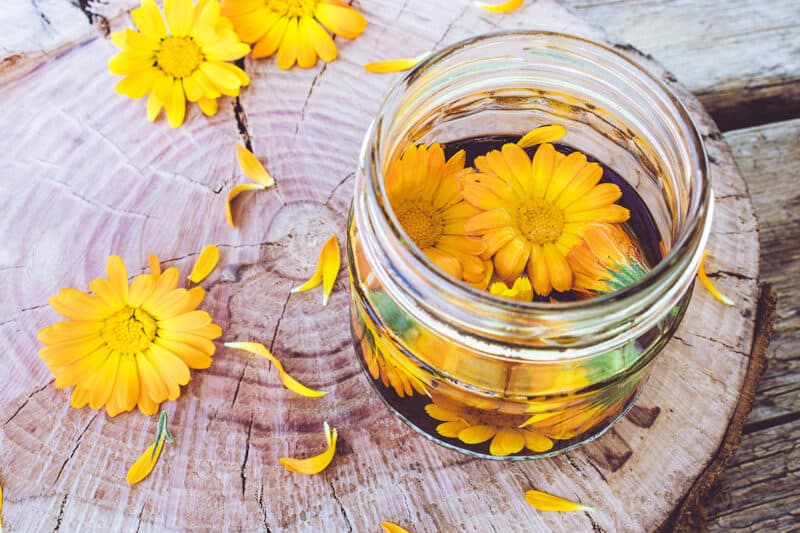
If you head to the store and look at the skincare products, you’ll find lots that contain calendula. This medicinal herb is known for calming skin conditions and reducing inflammation. It’s an excellent option for those with eczema or skin rashes.
Sprinkle the dried yellow or orange calendula petals on top of the soap or mix them inside. Another option is to make an oil infusion and add the golden oil to your soap mixture.
Learn how to grow calendula.
2. Chamomile
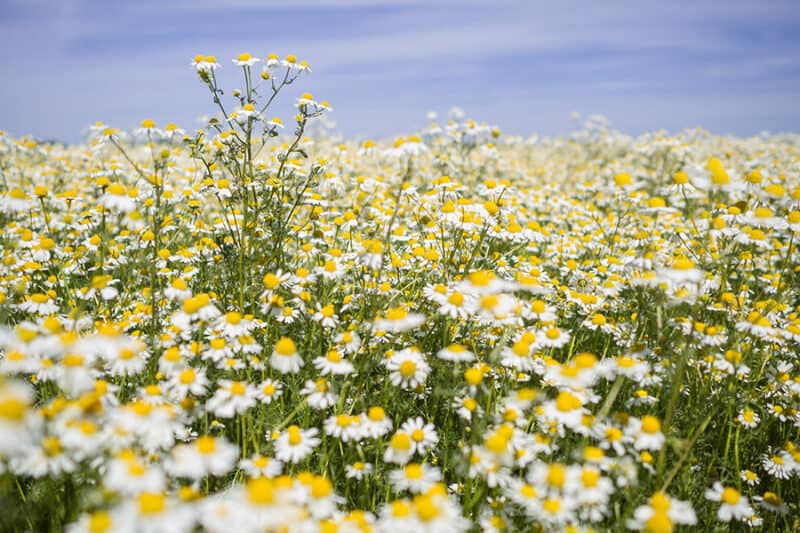
Everyone knows that chamomile has a calming effect. It’s most often used as an herbal tea, but it also works on scars and wounds thanks to its antibacterial, antioxidant, and anti-inflammatory properties.
There are several reasons to add chamomile to your soaps. For instance, it makes a lovely sleepy time option for a late-night bath or for when you have a minor skin rash.
Sprinkle the dried flowers on top of the soaps or create a chamomile herbal tea to mix with the lye. Another option is to use the petals mixed in with the soap for a chunky texture.
3. Comfrey
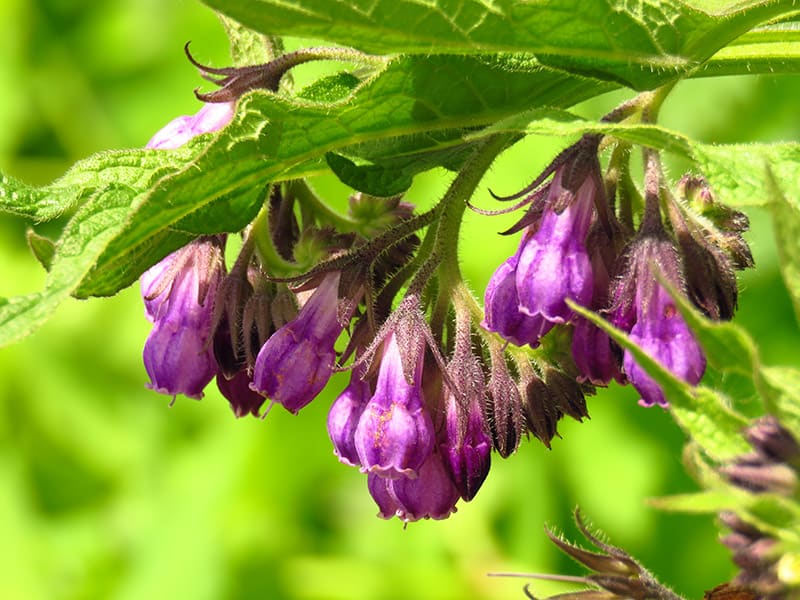
Comfrey is an herb that contains a high amount of allantoin, a chemical compound that is said to boost cell renewal. That means when you add it to soap, it may help heal your skin.
It’s also effective for acne and poison ivy, as well as skin rashes.
You can use comfrey root dried and ground into a powder. You can also use the flowers and leaves. All will improve your skin without drying it out.
Learn how to grow comfrey.
4. Cornflowers
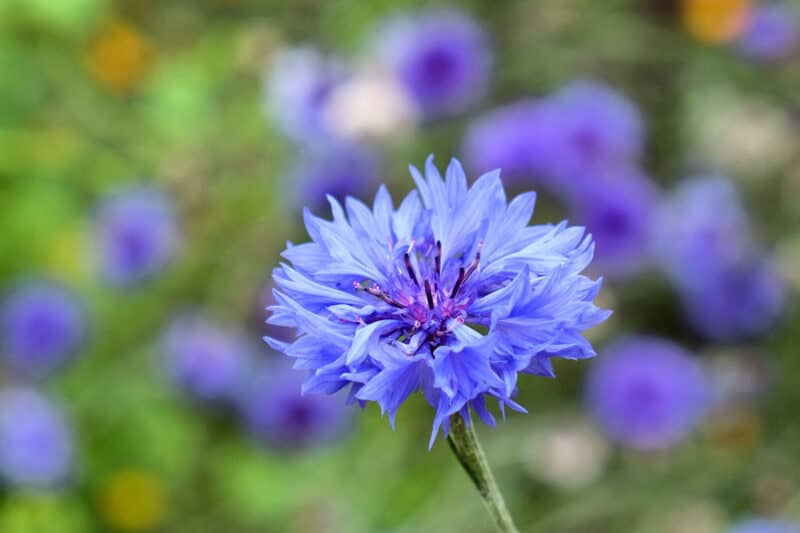
Sometimes known as bachelor’s buttons, cornflowers are plants with little flowers that are a beautiful, bright purplish-blue color. This herb is thought to help eyesight and to strengthen skin.
When the leaves are added to soap, it’ll add a pretty yellow color. The petals, dried or fresh, add a blue hue. Use them both in your soap mixture, or dry some of the cornflowers and sprinkle them on top of the soap loaves.
5. Goldenseal
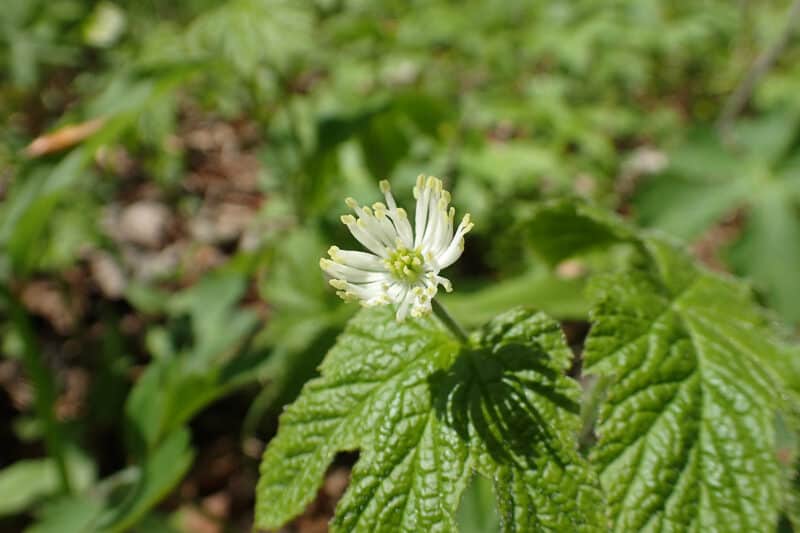
Goldenseal grows in the wild, but it’s endangered, so opt for cultivated goldenseal. This plant has three to five-lobed leaves with flowers and fruit sticking in the middle.
Goldenseal is perfect for soap if you have skin rashes, minor wounds, itchiness, poison ivy, cold sores, and inflammation. You can make an herbal tea or water infusion to add to your soap mix.
6. Jewelweed
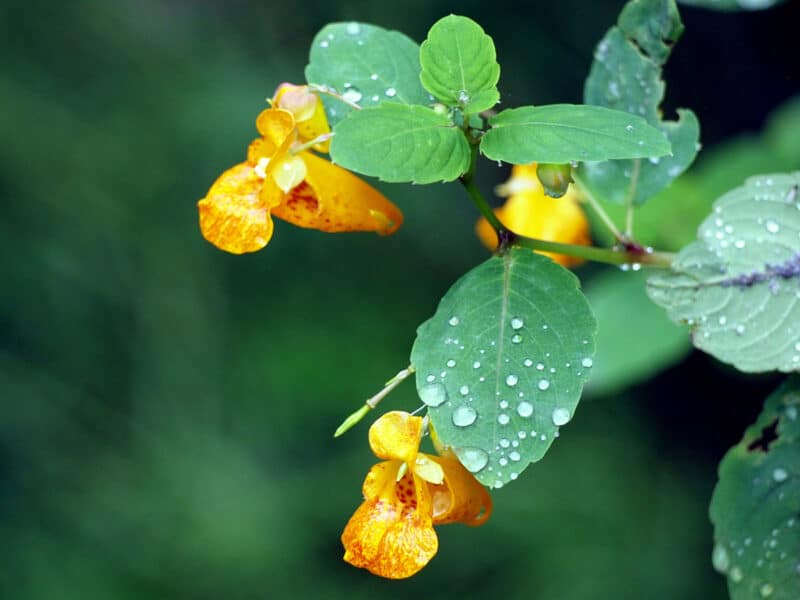
Jewelweed is known for treating poison ivy and can often be found blooming alongside streams and roadsides.
Once you find it, it’s easy to identify and use, and if you have poison ivy or poison oak on your property, it’s fantastic to have around. For those who suffer from serious reactions due to these plants, jewelweed soap is a safe treatment.
Unfortunately, you cannot find dried jewelweed online. If it doesn’t grow near you, find seeds to grow it yourself or use goldenseal as a substitution. Infuse water with jewelweed and use it with the lye to make the soap.
7. Lavender
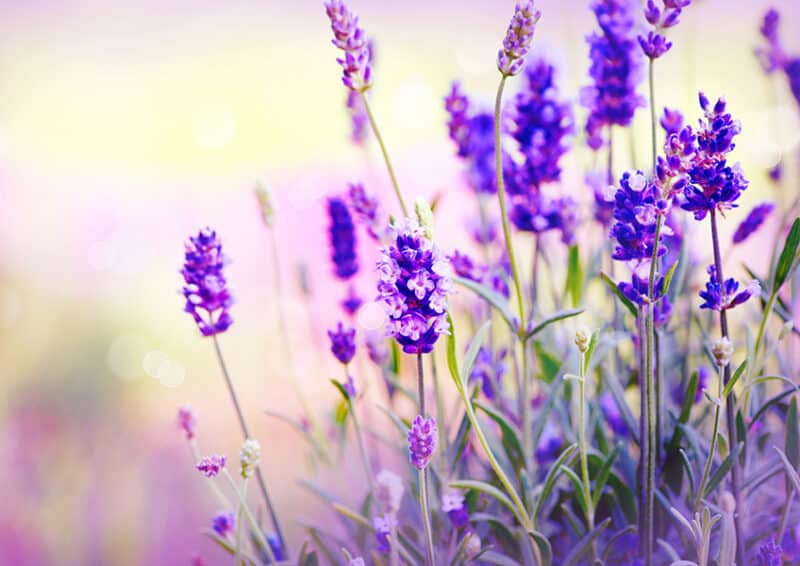
Without a doubt, the most popular herb to use for soap making is lavender.
Use lavender for soap making by sprinkling the dried leaves and petals over the top of your soap. It helps with exfoliation while adding beauty to each bar.
You can also make a lavender tea to add to the soap mixture to take advantage of the herb’s healing properties. It’s a great choice, but note that if you add it inside your soap mixture, chances are it’ll turn brown.
Consider using lavender in your soap to help you relax and drift off into sleep. It works well on minor rashes or skin conditions; lavender even helps with eczema.
Learn how to grow lavender in your garden.
8. Lemon Balm
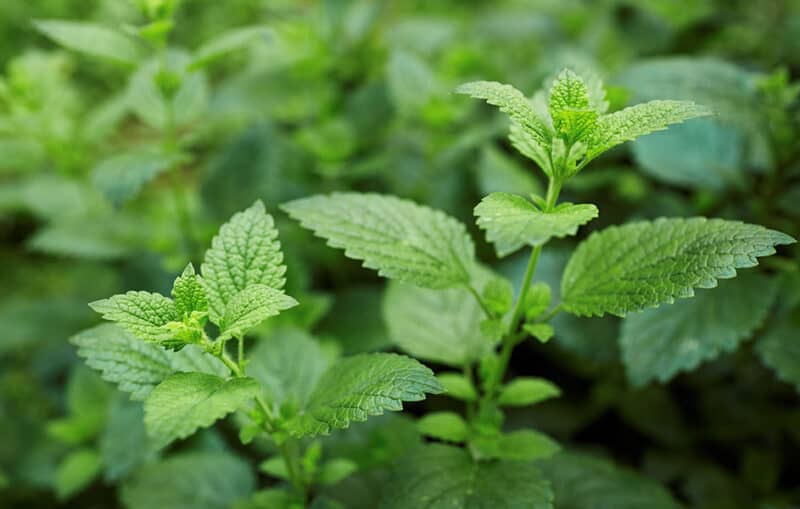
Lemon balm is one of the best herbs for soap making. It doesn’t have beautiful flowers, but it has a strong aroma, and it also looks pretty in your garden.
Lemon balm helps you calm down and relax; it’s perfect for aromatherapy. It also works for cold sores or if you just want to add a nice smell.
Learn how to grow lemon balm.
9. Nettle
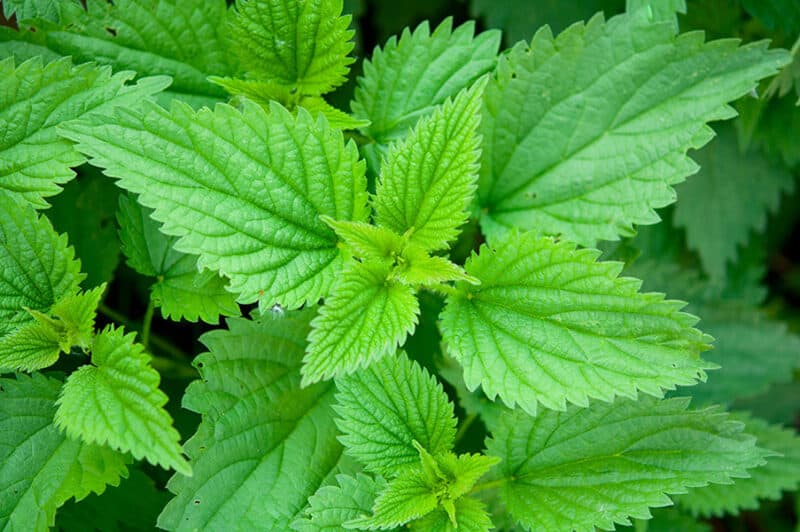
Nettles grow wild in many parts of the country; they’re edible and high in vitamins and minerals. These herbs have anti-inflammatory and astringent properties, so it’s great for making soap for your hair and skin.
Making soap from nettles is great if you have any skin rashes, acne, or inflammation problems. I know it sounds counterintuitive since it hurts if you brush against it in the wild, but it helps calm your skin.
There are several ways to use nettle in your soap making, but make sure you cook it, whatever you do. Try infusing it in oil, giving your soap a green color. The more nettle that you use, the darker green your soap will have.
10. Peppermint or Mint
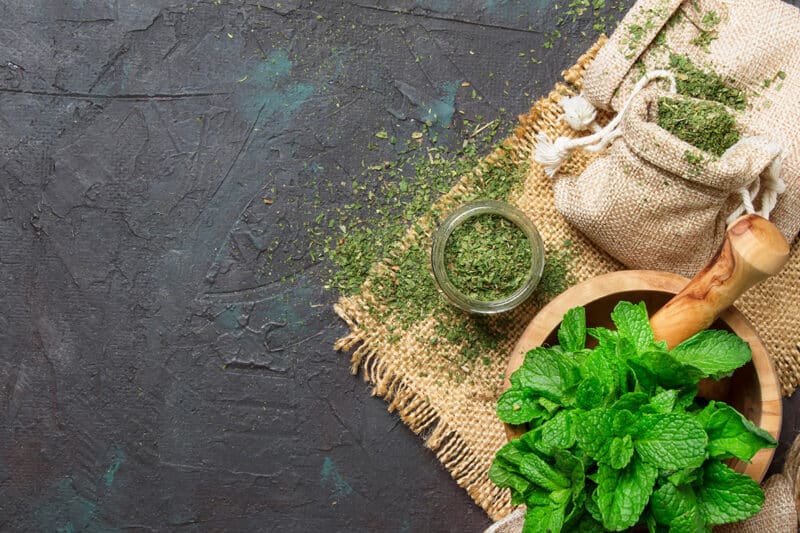
Peppermint, and mints in general, are some of the easiest herbs to grow; it’s so invasive that it quickly takes over entire garden beds. It’s best to grow peppermint in containers to prevent it from taking hold of your garden.
The best way to use mint with your soap making is to steep the leaves before use to prevent brown spots in your soap. Most soap makers don’t sprinkle leaves on the top; mix the herbal tea with lye.
You also can use mint essential oil or use the flowers as a decorative element.
Learn how to grow mint.
11. Broadleaf Plantain
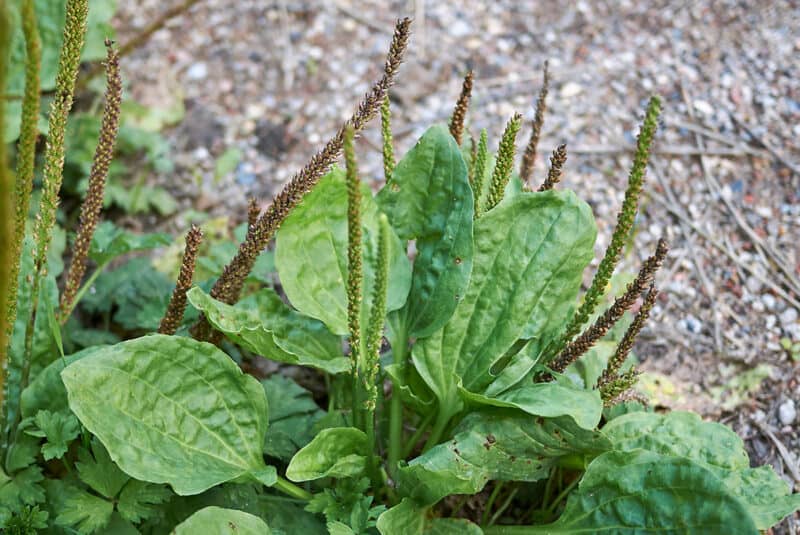
Many people assume broadleaf plantain (Plantago major) is a weed that grows in your backyard, but they’d be wrong. Several varieties grow throughout North America, and all are excellent for soap making.
Using plantain for soap making is said to draw toxins out from your body, and it may help treat insect bites, boils, cysts, and acne.
The nice thing about plantain is that it’s cooling, soothing, and moisturizing. That’s a great combination for soap.
Remember that the plantain you find growing in your garden or backyard isn’t the banana-looking fruit you find in your local grocery store or market. It’s a green leafy weed.
12. Rosemary
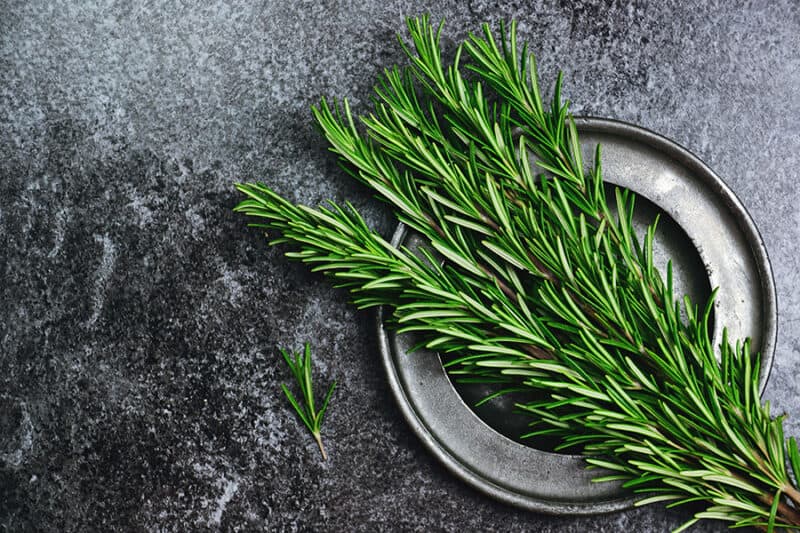
Rosemary is a beloved herb that grows in many herb gardens. It works for massage oils or shampoos, supporting circulation to your scalp for healthy hair.
Rosemary is a powerhouse herb that reportedly enhances circulation, so it works for cellulite. It also has antibacterial, anti-fungal, and antiviral properties while being full of antioxidants.
There are several ways to use rosemary in your soaps. You can buy rosemary oil extract, which acts as a preservative for your soaps. Another option is to powder dried rosemary, mixing it into your soap.
You can also sprinkle the leaves on top of the soap, but be aware that they’re pointy like pine needles. Use the blossoms as a decorative topping for your soap cakes.
Learn how to grow rosemary.
13. St. John’s Wort
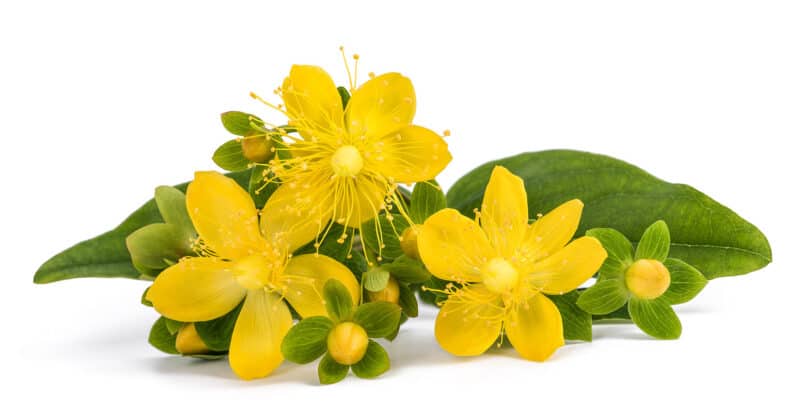
St. John’s Wort is known for reportedly helping people with anxiety, depression, or seasonal depression. At the same time, this herb has antiviral, antibacterial, and anti-inflammatory properties.
There are several reasons to use St. John’s Wort while making soap. It’s said to help with herpes and shingles, but its uses don’t stop there. Adding St. John’s Wort helps your skin heal from trauma, such as bruises, sprains, and burns.
Learn how to grow St. John’s Wort.
14. Yarrow
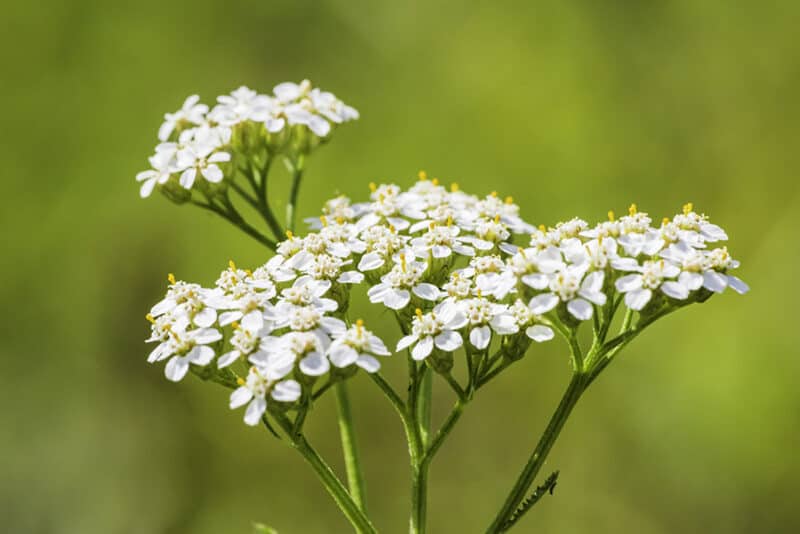
In most cases, yarrow is used internally, fighting off inflammation and helping wounds heal faster because of yarrow’s antibacterial and antiseptic properties.
Adding yarrow to your soaps is excellent for those with eczema, acne, and other skin conditions.
It’s best to use the tiny white flowers after drying, either on top of the soap or within the soap mix. Another option is to use the leaves and flowers in an herbal oil infusion or an herbal tea.
Learn how to grow yarrow.
Remember that you should always check with a medical professional before using any herb to treat a health condition, but all of these herbs are safe to use simply for their beauty and scent.
